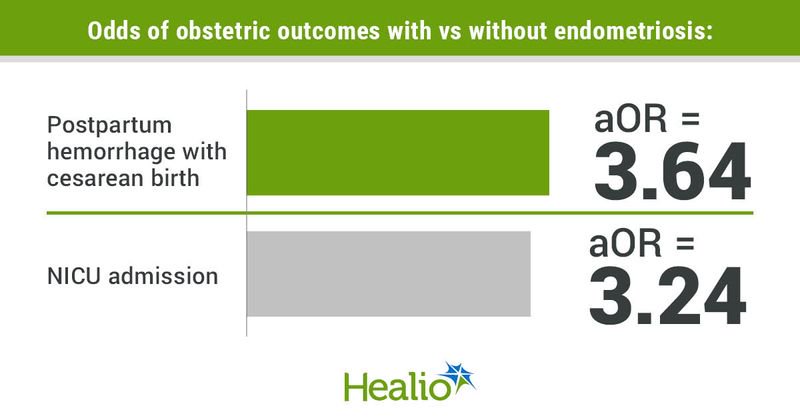Endometriosis raises odds of some obstetric outcomes, not preterm birth
Key takeaways:
- Women with vs. without endometriosis did not have higher odds of preterm birth.
- Women with vs. without endometriosis had higher odds of postpartum hemorrhage after cesarean birth and NICU admission.
Women with endometriosis are not more likely to deliver preterm, but they do have higher odds of postpartum hemorrhage during cesarean birth and NICU admission compared with those without endometriosis, according to study results.
“There is no consensus regarding specialist care for women with a diagnosis of endometriosis during pregnancy; however, recent data suggests that endometriosis may increase the risk of adverse obstetric and neonatal outcomes, including preterm birth,” Elisabeth Bean, MBBS, consultant obstetrician and gynecologist at Barking, Havering and Redbridge University Hospitals NHS Trust, U.K., and colleagues wrote in a study published in Fertility and Sterility.

Bean and colleagues conducted a single-center prospective, observational cohort study with women from the early pregnancy unit at University College London Hospital from October 2017 to November 2019. Of 503 women with a live pregnancy of more than 12 weeks’ gestation, 110 had endometriosis. All women underwent a pelvic ultrasound during early pregnancy to identify the presence of endometriosis and uterine abnormalities.
Primary outcome was preterm birth; secondary outcomes were late miscarriage, prenatal hemorrhage, placental site disorders, gestational diabetes, hypertensive disorders of pregnancy, small for gestational age neonate, delivery mode, intrapartum sepsis, postpartum hemorrhage and NICU admission.
More women with endometriosis deivered preterm compared with women without endometriosis, but this was not statistically significant after adjustments, according to the researchers. However, women with endometriosis had higher odds of postpartum hemorrhage during cesarean birth (adjusted OR = 3.64; 95% CI, 2.07-6.35) and NICU admission (aOR = 3.24; 95% CI, 1.08-9.73) compared with women without endometriosis.
In addition, women with persistent or recurred deep endometriosis after surgery had higher odds of placental site disorders (aOR = 8.65; 95% CI, 1.17-63.71), intrapartum sepsis (aOR = 3.47; 95% CI, 1.02-11.75), NICU admission (aOR = 3.24; 95% CI, 1.08-9.73) and postpartum hemorrhage (aOR = 6.2; 95% CI, 1.55-24.89) compared with women without endometriosis.
“This study did not identify endometriosis as a statistically significant risk factor for preterm delivery and supports the European Society of Human Reproduction and Embryology guidance that women with endometriosis do not warrant increased antenatal care,” the researchers wrote. “There is no evidence to support routine screening of women for the presence of endometriosis pre-conceptually or in early pregnancy.”










